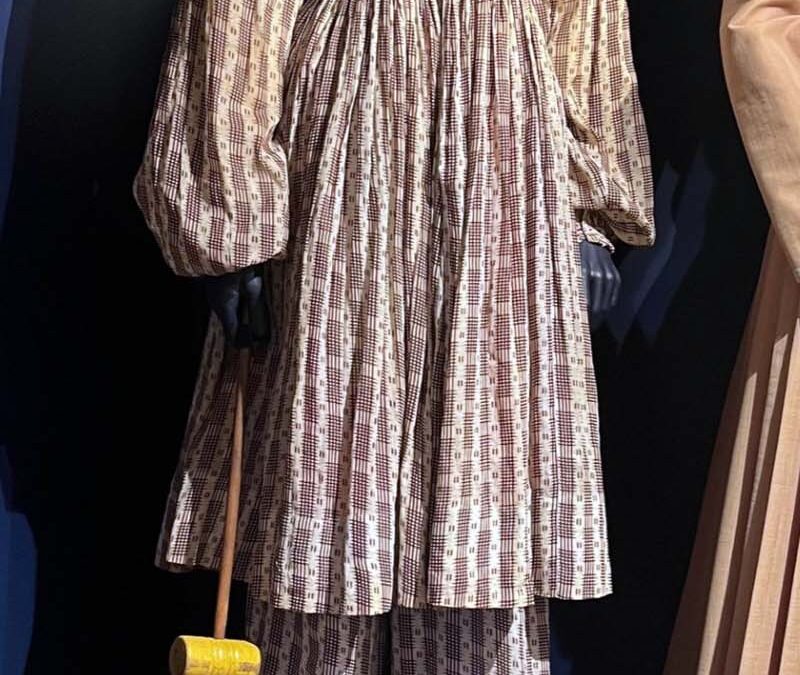
| Maker | Oneida Community |
| Date of Creation | 1851 |
| Location | Oneida, New York |
| Materials | Linen and silk |
| Institution | Oneida Community Mansion House |
| Credit Line | Oneida Community Mansion House |
| Accession Number | 98.676 |
| Photo Credit | Brandon W. Brooks, curator of the John L. Wehle Gallery of Genesee Country Village Museum |
The Oneida Community was one of the most successful and socially radical utopian communities in American history. The Community shared all personal possessions in common, practiced a form of group marriage, communal child rearing, and elevated the status of women. Their belief in relative equality for women was typified in their attire, including the “short dress” invented by Oneida Community women in 1848. Likely the inspiration for the “Bloomer Costumer,” these dresses consisted of a short skirt with pants or “Pantalettes” made of calico, delaine, or flannel. As the Community described their dress to a curious outsider in 1870, “The skirt is cut just long enough to fall two inches below the knee, and is faced or hemmed according to the material. As to fullness, five breadths of calico is our criterion in different materials, whether narrower or wider….As to the waist, the fan-shaped Garibaldi, yoked and plain modes, are most in vogue among us….The sleeves are mostly made after the mutton leg pattern….The pants, or as we call them, the pantalettes, are always of the same material as the dress.” These dresses took less time to put on, were cooler in hot months, and were much more conducive for the factory work and other tasks Oneida Community women performed. By challenging gender roles and sartorial norms of the time, the women of the Oneida Community were at the vanguard of women’s rights in 19th-century America.

